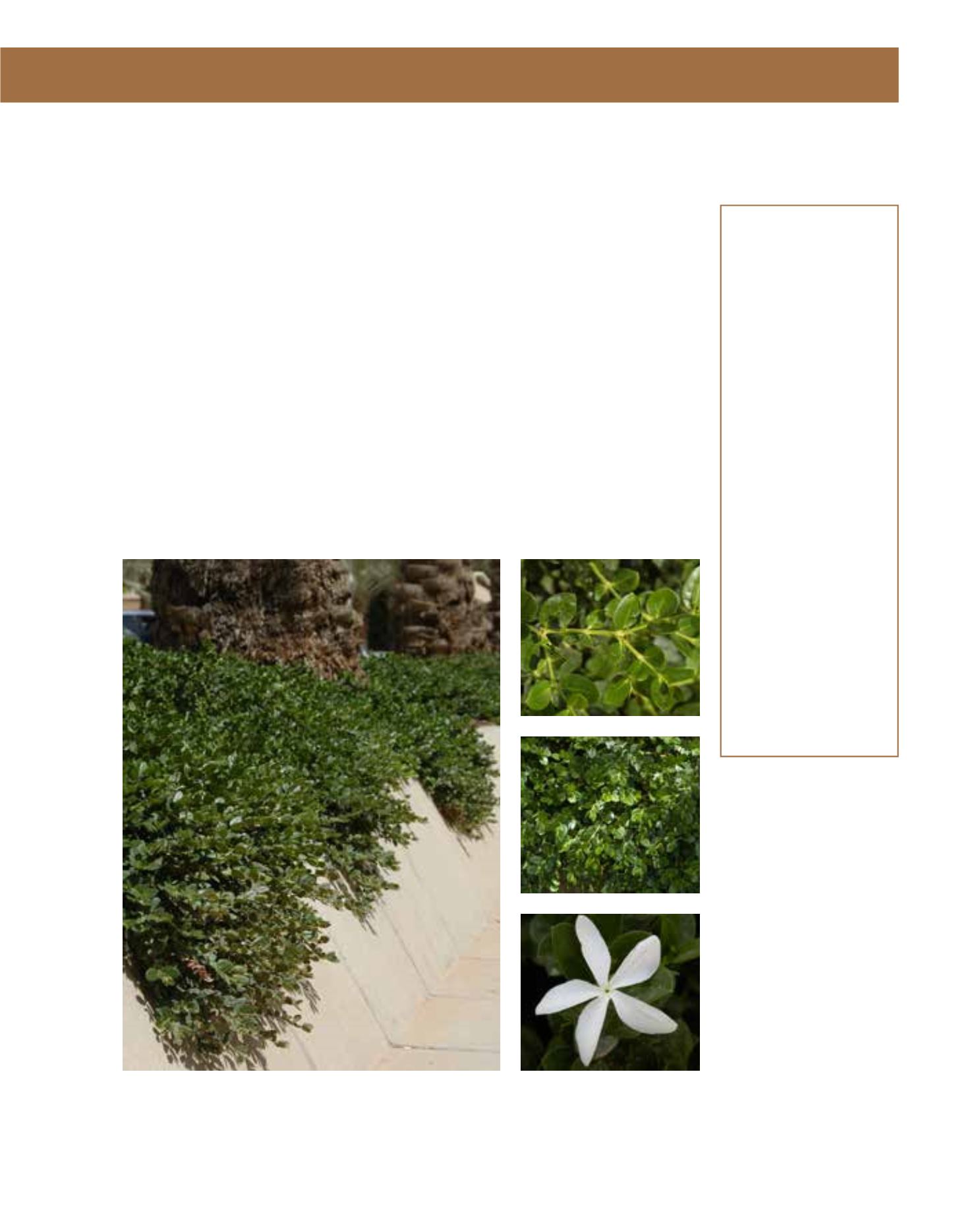

GENERAL
Origin
:
Mediterranean,
sub-tropical
Humidity
:
semi-arid, semi-
humid, very
humid
Propagation :
sowing and
pricking out,
cuttings
Maintenance :
moderate
CONDITIONS
Urban climate :
resistant
Dessication :
resistant
Stagnant water :
vulnerable
Irrigation
:
medium
Salinity/ppm :
high (5000 ppm)
Hardiness
:
0°C
SHAPE
Type
:
shrub
Height
:
1 m-3 m
Spread
:
1 m-3 m
Foliage
:
evergreen
FLOWER
Colour
:
white
Size
:
4 cm - 5 cm
Period
:
April - July
Smell
:
scented,
moderate, flower
FRUIT
Type of fruit :
berry
Fruit size
:
2 cm - 5 cm
Toxicity
:
edible, fruit
This spiny shrub is native to South Africa. Its leathery leaves are shiny and oval with acute tips.
Many sharp thorns protect the twigs, making planting close to walkways somewhat hazardous.
Milky sap is secreted when the branches are injured. Showy, white flowers contrast perfectly with
the dark-green foliage. They may reach 5 cm in diameter, are star-shaped, sweetly scented, and
grow in clusters in spring and early summer. The fruit is a red, egg-shaped berry up to 5 cm long
with a delicious, refreshing taste. The Natal Plum is frost-tender but revels in heat, and grows at
a moderate speed to a height and width of 3 metres. In its home country, it may even become a
small tree up to 9 metres high. It does well in full sun, but also tolerates some shade at the cost
of flowering and fruiting. The glossy leaves resist desiccation from wind. Cultivars grow more
compactly and remain shrubs of manageable size. They are ideal bushes for small gardens and are
useful as screening hedges, groundcover, grouped planting or in containers. The soil should be
well drained and neutral. To encourage establishment by an extended root system, watering must
be deep. Both drought and soil with a high salt content are tolerated. General-purpose fertilisers
are best applied in early spring after the plants’ dormancy. As a hedge plant, it takes shearing in
spring after flowering, but recovers slowly from harsh cutting back. Recovering rapidly from frost,
damaged branches need to be removed, which may spoil the shrub’s appearance.
84
Carissa macrocarpa,
Apocynaceae
Natal Plum
















